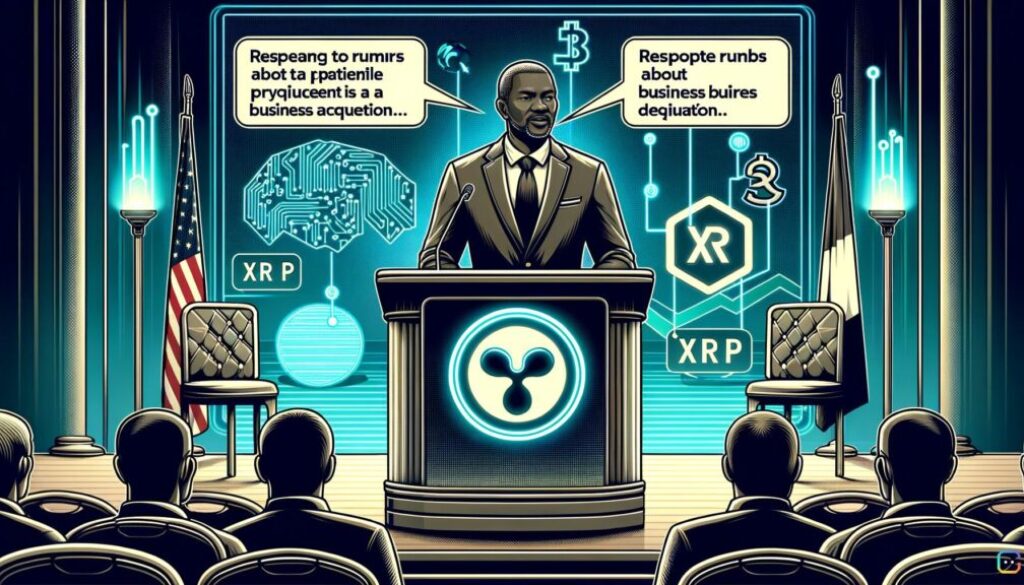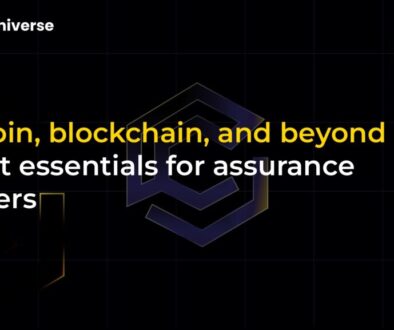Ripple CEO Denies Acquisition Rumors at XRP Event

In a move that sent ripples through the crypto community, Ripple CEO Brad Garlinghouse unequivocally denied rumors of his company attempting to acquire stablecoin giant Circle. Speaking at the highly anticipated XRP Las Vegas event, Garlinghouse put an end to weeks of intense speculation, clarifying that Ripple had never pursued such a deal.
The denial not only dispelled reports of a supposed $5 billion, or even $20 billion, acquisition offer but also painted a clearer picture of Ripple’s strategic direction, emphasizing collaboration over market domination through buyouts. This announcement had an immediate positive impact on XRP, which saw its price rise by 3%, making it the best-performing asset among the top 18 cryptocurrencies post-announcement.
Setting the Record Straight: No Circle Acquisition for Ripple
The crypto world had been abuzz with whispers of a potential blockbuster acquisition. Reports suggested Ripple was eyeing Circle, the issuer of the USDC stablecoin, with offers ranging from $5 billion to a staggering $20 billion. Such a move would have significantly altered the stablecoin landscape, potentially positioning Ripple as a dominant player in that sector.
However, Brad Garlinghouse, known for his direct communication, addressed these rumors head-on at the XRP Las Vegas event. He stated emphatically that Ripple had “never pursued an acquisition of Circle.” This direct refutation aimed to quell the speculation and underscore Ripple’s current focus, which, as he elaborated, is not on acquiring competitors but rather on building and fostering a more connected financial ecosystem.
Garlinghouse’s remarks were particularly important for the XRP community, easing concerns that XRP might be sidelined or overshadowed by USDC if Ripple were to integrate a major stablecoin operation. The CEO’s clarity reinforced Ripple’s commitment to its core mission and its native digital asset, XRP.
Circle’s Independent Path: Forging Ahead with an IPO
While the acquisition rumors swirled, Circle itself has been charting a significant course of its own: preparing to go public. The company has officially filed for an Initial Public Offering (IPO), marking a pivotal moment for the stablecoin issuer and the broader crypto industry.
Circle submitted a draft registration statement on Form S-1 with the U.S. Securities and Exchange Commission (SEC), with the intention of listing its shares on the New York Stock Exchange (NYSE) under the ticker symbol “CRCL.” The company is reportedly aiming for a valuation of approximately $5.65 billion, with an offering price target ranging from $24 to $26 per share.
Circle’s IPO filing offers a rare glimpse into the financial workings of a major stablecoin issuer. Key insights include:
- USDC Issuance and Redemption: Between January 1, 2021, and December 31, 2024, Circle minted roughly $504 billion of USDC and redeemed approximately $464 billion.
- Significant Growth: USDC, Circle’s flagship stablecoin, experienced remarkable growth, expanding its market capitalization from under $1 billion in 2020 to over $50 billion by 2022.
- Market Position: As of March 31, 2025, USDC stands as the second-largest stablecoin globally, holding a substantial 29% market share.
The decision to pursue an IPO underscores Circle’s commitment to regulatory transparency and its confidence in its business model, which focuses on providing a regulated, fiat-backed digital currency for global commerce and financial transactions.
Ripple’s Vision: Collaboration and CBDCs
Beyond clarifying acquisition rumors, Brad Garlinghouse used the XRP Las Vegas platform to reiterate Ripple’s strategic vision, which centers on collaboration and building infrastructure for the future of finance. He notably criticized the “infighting” within the crypto industry, advocating for unity to foster broader development and adoption.
Ripple’s approach is characterized by a “hybrid” model, bridging the gap between traditional finance and the nascent crypto space. A key component of this strategy is its extensive work on Central Bank Digital Currencies (CBDCs) and cross-border payments. Ripple has actively pursued strategic partnerships with central banks globally to assist in CBDC development. Currently, Ripple is collaborating with ten central banks, aiming to:
- Enhance financial inclusion for underserved populations.
- Streamline and reduce the cost of cross-border remittances.
- Improve the efficiency and security of national payment systems.
Notable examples of these collaborations include Ripple’s partnership with the Royal Monetary Authority of Bhutan to pilot a CBDC, focusing on improving digital and cross-border payments within the country. Similarly, Ripple is assisting the Republic of Palau in exploring a USD-backed CBDC to facilitate both local and international financial transactions.
Garlinghouse consistently emphasizes that a network of interoperable digital fiat currencies can effectively overcome the fragmentation seen in the current global financial system. This vision aligns with Ripple’s long-standing goal of creating a more efficient and interconnected global payments infrastructure, leveraging its technology for the benefit of central banks and financial institutions worldwide.
A Path Forward: Building, Not Buying
The XRP Las Vegas event and Brad Garlinghouse’s candid remarks have provided much-needed clarity on Ripple’s strategic direction. By firmly denying the acquisition rumors, Ripple has reaffirmed its commitment to organic growth, technological innovation, and strategic partnerships, particularly in the burgeoning CBDC space.
The simultaneous pursuit of an IPO by Circle further highlights the diverse and maturing landscape of the crypto industry. Rather than a battle for dominance through acquisitions, the current narrative suggests a future where different entities carve out their niches, focusing on their core strengths and contributing to the broader digital economy through their independent paths.
Ripple’s emphasis on collaboration, its hybrid approach to traditional finance, and its dedication to solving real-world payment challenges through innovative blockchain solutions underscore a vision for a more unified and efficient global financial system, built on partnership rather than aggressive competition.


